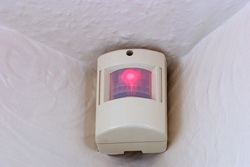Making sensor alarms more reliable
With the burgeoning market for multi-sensor alarms, there comes an urgent need for more reliable, high-performance, low-cost microwave motion detectors. To make them less sensitive, frequencies for short-range sensor and security systems need to be harmonised and stepped up from 10 GHz to 24 GHz. The latter, however, are today too big and expensive for use in such applications. The 'The development of a novel integrated super high frequency (SHF) non contact detector for mobility detection and speed measurement' (Waveshift) project sought to arrive at a solution offering a universal microwave detector unit that meets frequency harmonisation needs. In this way, Waveshift would also bring down the numbers of false alarms that take up unnecessary time on the part of alarm response services and cause problems for victims of crime. Project partners first worked to determine the desired parameters for the short-range motion and movement direction detection unit. Aiming to arrive at full characterisation of a commercially viable detector, they explored ways of enhancing detection accuracy in different settings. Microstrip antennas were designed and built and a beam switching mechanism prototype was designed and tested. Project activities also led to the development of a reconfigurable antenna array, which during testing returned positive results and were deemed suitable for use in the application. Other work focused on thermally improved prototype housing research into various related manufacturing techniques. Once work on all independent detector elements was completed, team members focused on integration and testing, and validated prototypes of different motion and direction sensor modules. The complete motion and direction detectors for security applications and automatic door openers were then assembled and subjected to prototype testing. Advances and innovation in the design and construction of sensors have the potential to boost a market dedicated to protecting Europe's citizens, and to drive the competitiveness of the continent’s small businesses.

